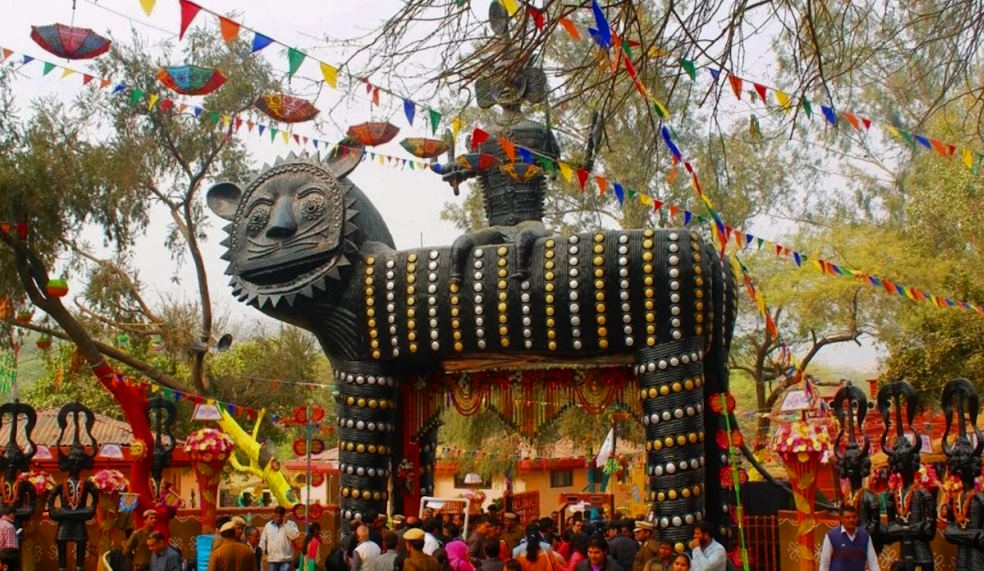Cultural Kaleidoscope: Celebrating Festivals and Fairs Across India
Steeped in history, diversity, and vibrant traditions, India stands as a cultural kaleidoscope, where a tapestry of festivals and fairs weave together the intricate threads of its rich heritage. From the gleaming lights of Diwali to the exuberant colors of Holi, the devotion of Eid al-Fitr to the jubilation of regional harvest celebrations, the nation’s festivals are a testament to the unity in its diversity. As each corner of the country embraces its unique identity, festivals serve as timeless bridges connecting people with their roots while fostering a sense of communal harmony.
Regional Festivals: A Tapestry of Traditions
India’s cultural landscape is as diverse as it is enchanting, with its regional festivals offering a glimpse into the soul of different communities. These celebrations not only commemorate age-old customs but also embody the spirit of unity, togetherness, and reverence for nature.
Pongal/Makar Sankranti: Harvest Celebrations
Pongal and Makar Sankranti mark the transition of the sun into the zodiac sign of Capricorn, signifying the end of winter and the onset of longer days. Beyond the festive fervor, these celebrations hold profound agricultural significance. They pay homage to the bounties of the land, honoring the hard work of farmers. The rituals include the boiling of the ‘Pongal’ dish, symbolizing abundance, and the colorful kolams drawn on doorsteps. The joyous feasting during these festivals brings families and communities together, fostering bonds that transcend generations. The symbolism of unity is palpable as everyone comes together to share in the blessings of a fruitful harvest.

Navaratri/Durga Puja: Worship and Dance
Navaratri and Durga Puja are marked by devotion, dance, and divine feminine energy. Navaratri spans nine nights and is a tribute to the Goddess Durga. Her valor and grace are celebrated through intricate rituals and vibrant dances like Garba and Dandiya. These forms of dance not only uphold cultural heritage but also become platforms for young and old alike to connect and express themselves. The festivities not only honor the goddess but also the strength and resilience of women, reflecting the essence of feminine power in Indian culture.
Cultural Fairs: Where Tradition Meets Innovation
India’s cultural tapestry is intricately woven with a myriad of traditions and celebrations, and its cultural fairs stand as vibrant reflections of this diversity, bridging the gap between the past and the present.
Kumbh Mela: Spiritual Gathering
The Kumbh Mela stands as a testament to India’s spiritual legacy, drawing millions of devotees and seekers from across the world. This awe-inspiring gathering is rooted in the ancient belief of spiritual cleansing through ritualistic bathing in sacred rivers. With historical origins dating back centuries, it’s a place where myth, faith, and devotion converge. Organizing an event of such monumental scale presents unprecedented challenges, from logistics to crowd management. However, in modern times, technology has aided in addressing some of these hurdles while maintaining the essence of the pilgrimage.
Pushkar Camel Fair: Traditions and Trade
The Pushkar Camel Fair is a unique fusion of commerce and culture, where Rajasthan’s arid landscape comes alive with vibrant hues. This fair, originally a trading hub for camels and livestock, has evolved into a vibrant spectacle, attracting traders, tourists, and cultural enthusiasts. The camel trading and competitions highlight the region’s rural traditions, while folk performances and cultural showcases amplify the celebration’s vibrancy. Amidst the trading, the fair serves as a platform for cultural exchange, fostering a deeper understanding of Rajasthan’s way of life.

Impact on Tourism and Economy: Festivals as Catalysts
The allure of India’s festivals transcends boundaries, drawing international tourists into a tapestry of colors, traditions, and cultural celebrations. Beyond the sensory spectacle, these festivals wield a profound influence on both the nation’s economy and its local communities.
Draw for International Tourists
India’s festivals hold a magnetic charm for global travelers seeking unique cultural experiences. The kaleidoscope of Diwali’s lights, Holi’s vibrant hues, and the grandeur of religious celebrations like Eid al-Fitr beckon visitors to immerse themselves in the country’s rich heritage. This cultural tourism doesn’t just ignite curiosity; it sparks global interest, fostering cross-cultural exchanges and enriching intercultural understanding. The substantial economic advantages arise from the money transfer from Germany to India by international visitors, which injects capital into various sectors, thereby contributing to local economies and creating employment prospects.
Boosting Local Economies
The impact of festivals reverberates through local economies, empowering a web of artisans, craftsmen, and businesses. Artisans who create intricate festival-specific crafts find a wider market during these celebratory times, further enhancing the value of their skill and tradition. Hospitality and accommodation industries witness a surge in demand, prompting investments in infrastructure and service improvements. Street vendors and local businesses experience heightened footfalls, translating into increased sales and prosperity. These festivals act as community mobilizers, bridging urban and rural divides, as local residents actively participate in catering to the influx of tourists, fostering a sense of shared responsibility for the festivities.

